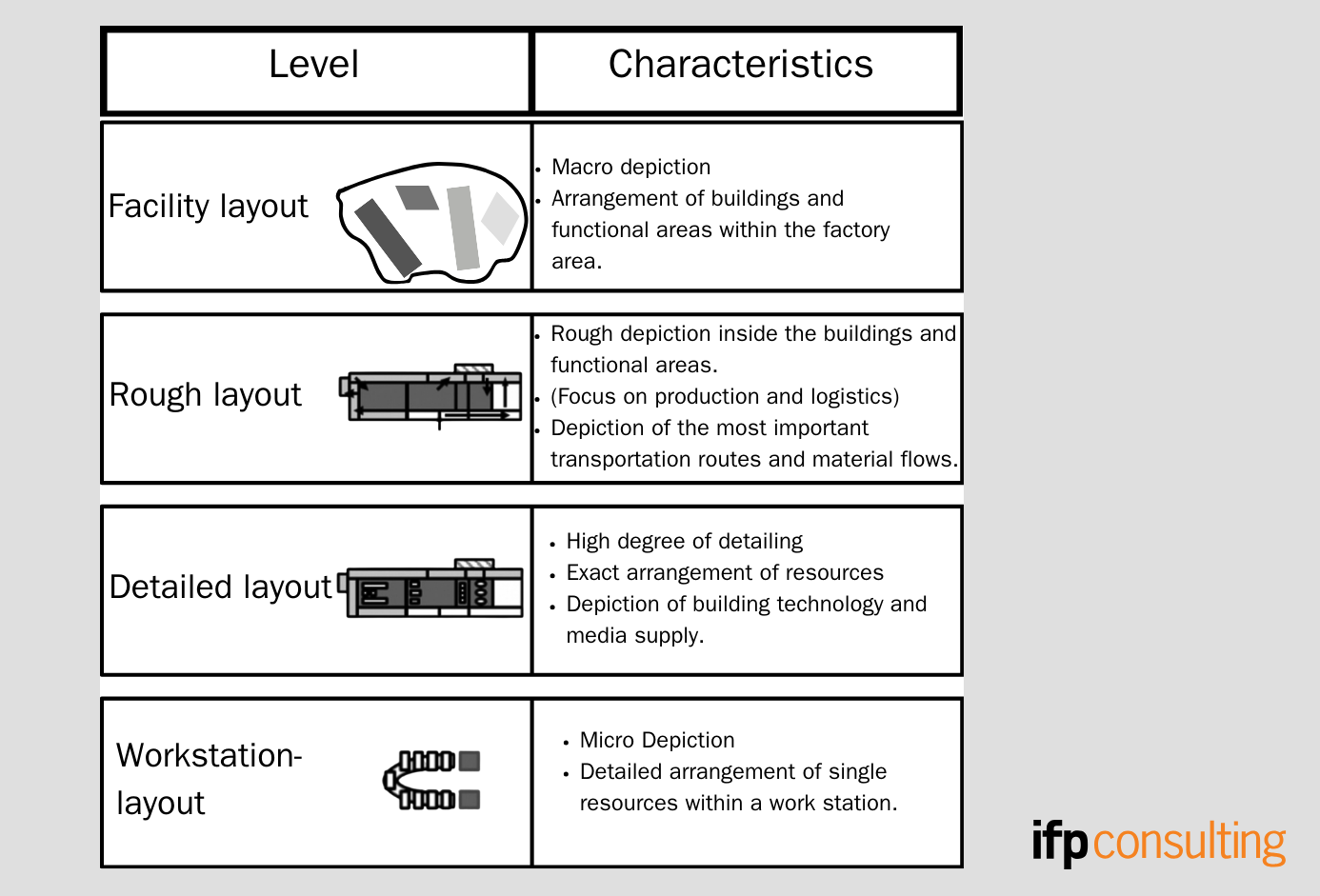Layout planning
We improve material flow and structures through optimized factory layouts.
Services in the field of production and logistics
Services in the field of production and logistics
Optimized material flow
With flexible factory layouts to efficient flows and transparent structures
Layout planning is a central component of factory planning. The goal here is the ideal spatial arrangement of production and logistics areas to ensure an optimal flow of materials.
The dynamic and increasingly complex factory environment means that optimally planned layout structures change over time into suboptimal structures. This in turn results in the need to adapt existing factory layouts to changing requirements. The discipline of layout planning has thus increasingly developed in recent years from a one-time or cyclical to a permanent task in manufacturing companies.
In addition to the objective of sustainably reducing costs and process times through appropriate layout designs, the aspects of flexibility and adaptability are becoming increasingly important in layout planning projects.
We support you with layout planning
- Rough layout planning
- Detailed layout planning

Interactive block layout development with digital tools
Following the factory planning principle of “from the rough to the fine”, layout planning typically begins with the creation of a rough layout showing the basic arrangement of the individual production and logistics areas in relation to one another.
The development of rough or block layouts is a creative and interactive process involving many stakeholders from a wide range of business areas.
With our interactive touch planning table, we enable efficient collaboration between all parties involved in layout development. Different layout variants can be developed quickly and intuitively and quantitatively evaluated on the basis of selected KPIs such as logistics costs or space utilization. The interactive planning table combines the know-how and years of experience of the technical experts with simulation-based material flow analyses and KPIs, thus helping to efficiently develop an optimal layout variant.
Within the framework of detailed layout planning, the transition from the rough layout to the detailed layout at workstation level takes place, which is used for planning ready for implementation. It contains information on the exact dimensions and positioning of all machines, equipment, buffer areas, workbenches, auxiliary equipment, storage and logistics equipment, column grids, as well as path networks and social areas. To increase the quality of planning and for the purpose of coordination, collaboration and communication with all project participants, ifp consulting applies the BIM method as required within the framework of conceptual and detailed planning.



